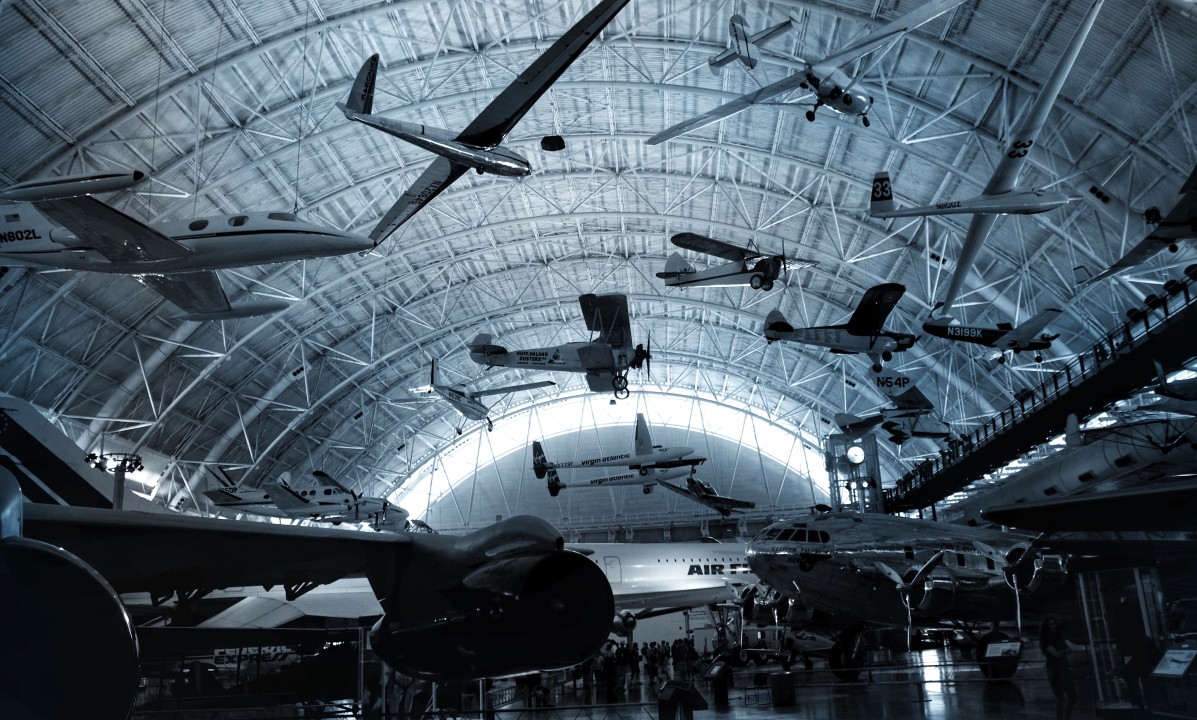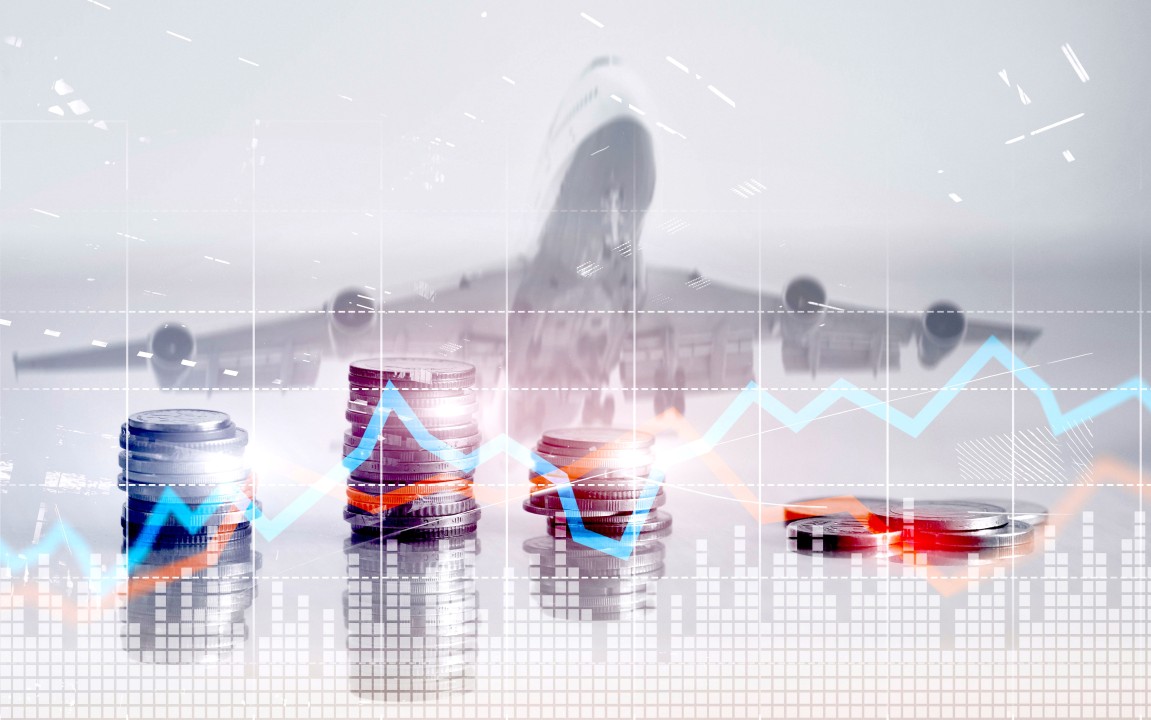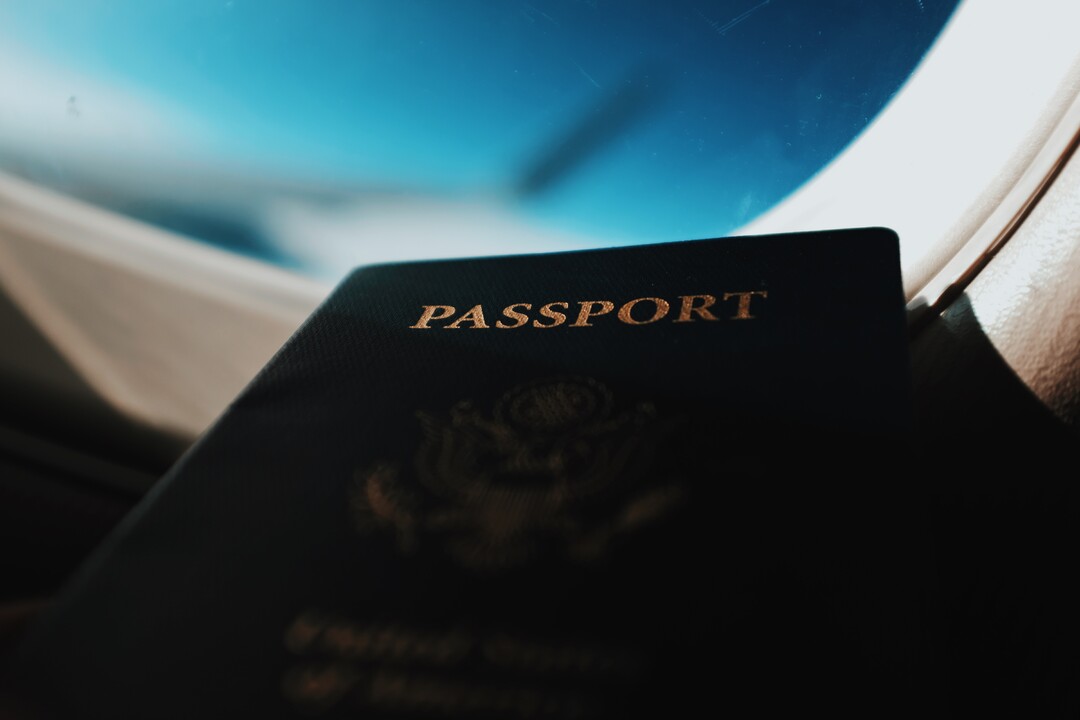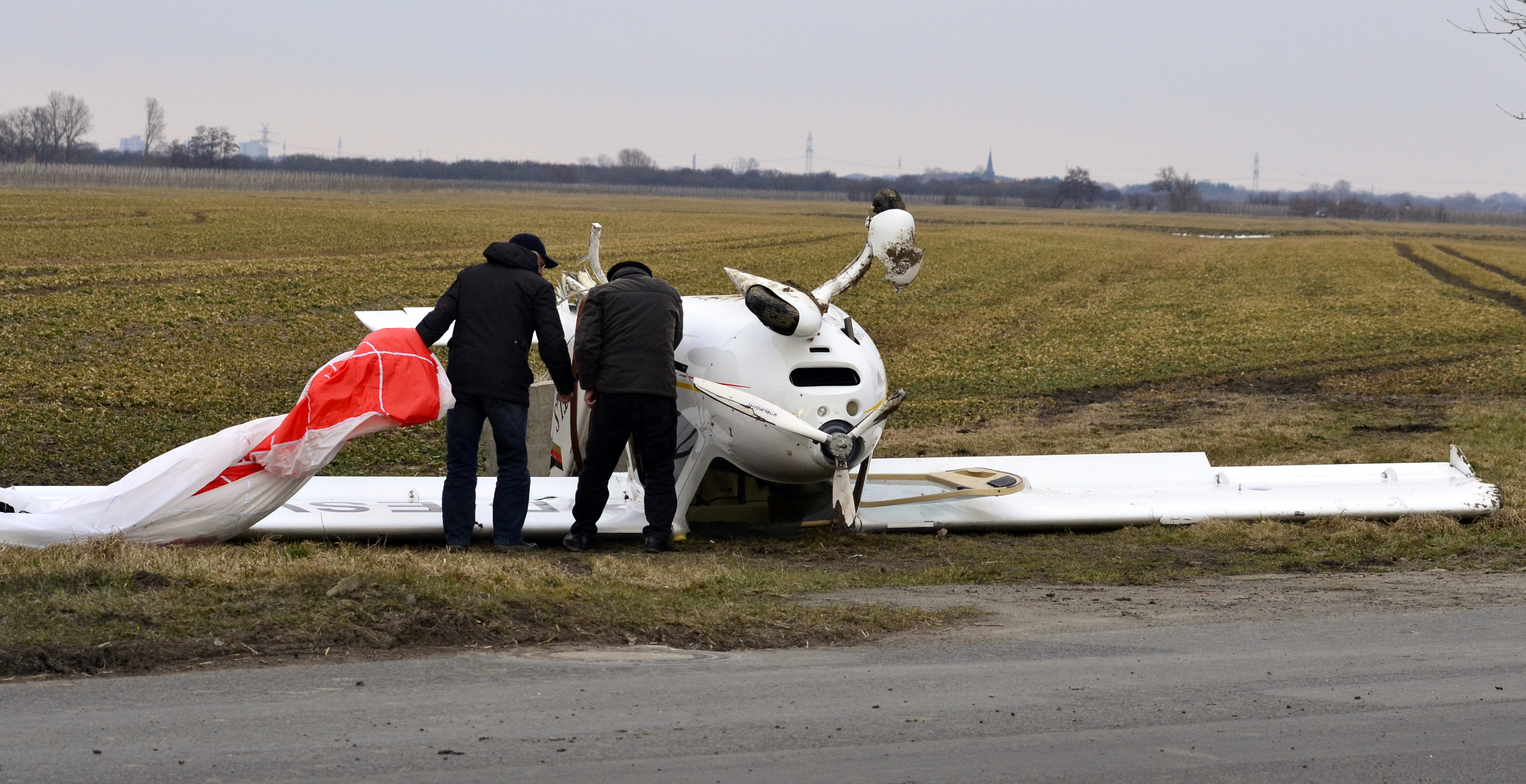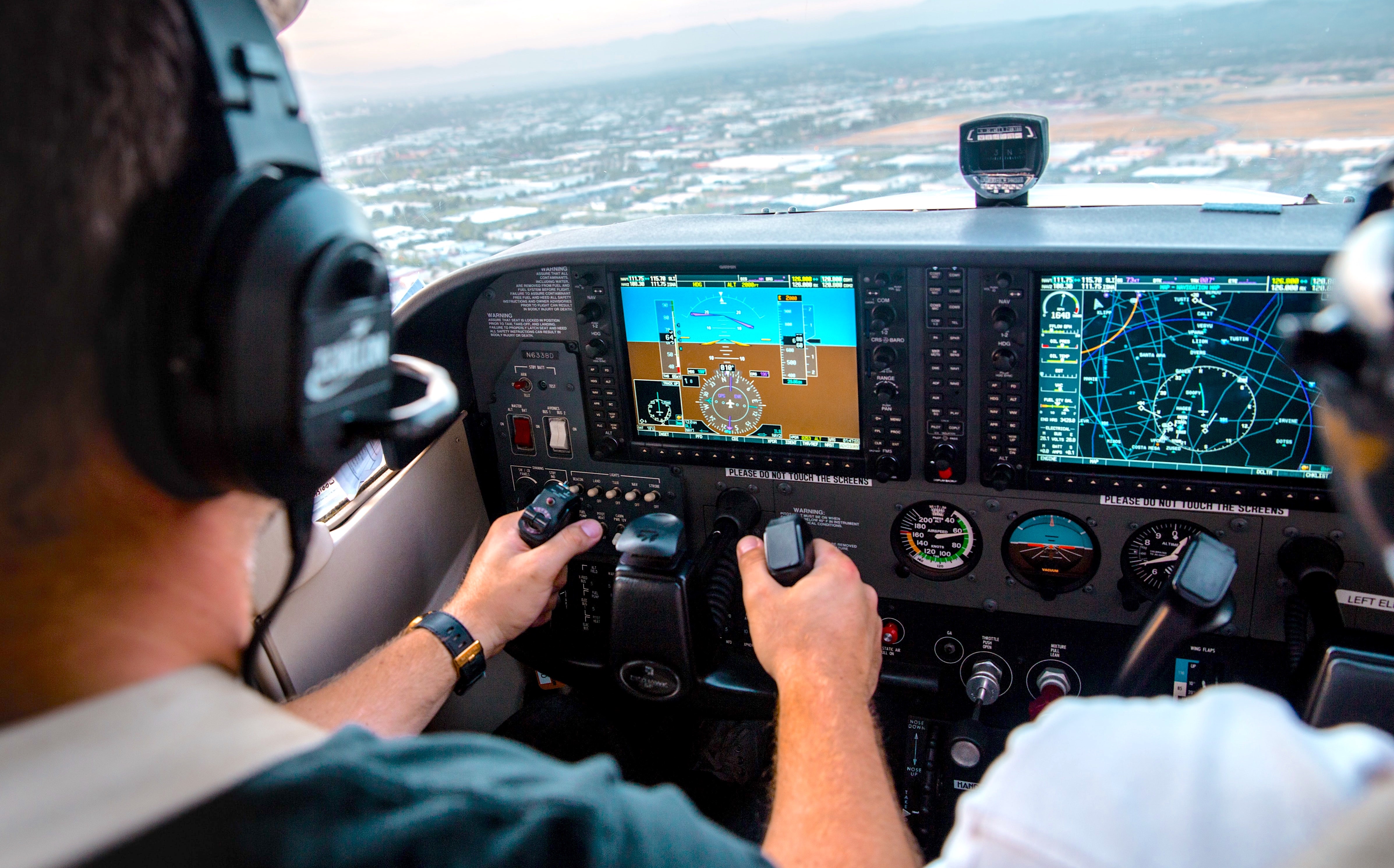Inflation: Higher costs and their effects on Flight Schools

Very few business owners and flight schools have had to operate their business in a high inflation environment. The last time inflation was this high, using the consumer price index (CPI) as an indicator, was approximately 40 years ago. A majority of flight schools and companies in business today, were not in operation back then. There are very few flight schools that have lived through those times that are still operating today. Inflation is sometimes called the hidden tax because it erodes the purchasing power of a company’s capital as well as capital goods insidiously. There are many aspects that go into understanding how inflation can and will affect a business that is not readily understood. These aspects are not always so obvious to businesses’ who have no experience operating in this economic environment. In this article we will discuss some of these factors, how flight schools can prepare, and how they can better operate in these economic conditions.
Key Takeaways
- A higher rate of inflation has been observed over the past few years, based upon data charts measuring PPI and CPI. This increased rate of inflation has dire impacts on flight schools and the aviation industry as a whole.
- Inflation heavily affects cost of operations for flight schools with internal cost such as personnel, and equipment, to external factors such as insurance rates and fuel cost. These operations have seen increased prices and flight schools are looking for a way to curb the negative impacts of this.
- Responses and methods for dealing with this economic environment have shown to be successful, however, as inflation is projected to increase it is essential for flight schools and other areas of the industry to take the necessary measures as well as implement new strategies.
What is inflation
According to The Mises Institute, Inflation is defined as, “when a government increases the quantity of paper money, the result is that the purchasing power of the monetary unit begins to drop, and so prices rise”. Therefore, Inflation is experienced is the decline of purchasing power of a given currency over time. A quantitative estimate of the rate at which inflation occurs can be reflected in the increase in the price for a basket of goods and services in an economy over a period of time. The rise in price for goods and services nationally, often expressed as a percentage, means that a unit of currency effectively buys less than it did before.
Inflation is sometimes classified into three types: Demand-Pull inflation, Cost-Push inflation, and Built-In inflation.The most commonly used inflation indexes are the Consumer Price Index (CPI), which measures the total value of goods and services consumers have bought over a specified period and the Producer Price Index (PPI), which is the average change in prices received by the producer and excludes indirect taxes. Inflation can be viewed positively or negatively depending on the viewpoint and rate of change. Positively for the federal government who for many reasons desires inflation, and negatively for business and consumers who see inflation as a degradation of their general spending powers. Inflation can be contrasted with deflation, which occurs when the purchasing power of money increases and prices decline.
Inflation over the past 2 years
The CPI measured Inflation has been steadily fluctuating between lower intervals with a sharp increase as of 2021 that is 5 times more than the year prior! The change comes from a decrease in inflation in the year 2020 due to pandemic related concerns and other factors (1.4%), then quintuples to an alarming 7% in the first month of 2022, and has only gotten worse, March 2022 CPI is now at 8.5%, as observed from data provided by the US Inflation Calculator. While some of this increased percentage comes from the current war in Ukraine and the cost of fuel and farm produce coming out of Russia, the majority of it is related to the continuous increase in inflation over the past two years. There has not been an increase or rate of inflation this high since the early 1980s recession, a harsh economic time where the rate of inflation went as high as nearly 15% from early 1979 to 1983.
The COVID-19 pandemic caused a shock to the world economy, disrupting supply chains and contributing to major delays in shipping. Labor shortages and surging consumer demand have only exacerbated this problem. With many items in short supply and the cost of shipping going up, prices are increasing. Notwithstanding the above, it is important to note that supply chain issues and labor shortages are considered by sound economic principles to be effects of higher inflation, not necessarily the cause. As stated earlier in this article inflation is primarily caused by an increase in the money supply of an economy. However, this article is not an economic paper and therefore we will not dive too deep into the causes of inflation itself.
A high rate of inflation recently manifested as big gains in food, gasoline and shelter, according to the Bureau of Labor Statistics (BLS), putting further pressure on the spending power of the average American, and the bottom lines of businesses. They claim that energy prices grew yet again, with total prices jumping 11%—while the 12-month gains are still an astounding 32%. Gasoline prices rose 18% in a month, and are nearly 48% higher than a year ago, while fuel oil rose 22%”
The producer price index (PPI) can also be utilized to analyze the rate of inflation. The PPI measures the average change over time in the selling prices received by domestic producers for their output. It presents the inflation picture from a different perspective than CPI. When companies experience higher input costs, they are most likely to be passed on to other areas, primarily the buyers. Firms will likely charge more for products although firms throughout the supply chain will typically hedge or absorb their input costs, higher prices will eventually be realized once firms are unwilling or unable to absorb further price increase in their cost of production.
How does inflation affect the cost of operating a Flight school
As the price of goods and services rise nationally they have significant implications for flight schools and aviation businesses across the country. Price increases have already been a challenge for flight schools and the industry. The situation is getting more complicated with inflation further driving prices and creating an unpredictable environment to plan for. Some of the ways that flight schools are affected by inflation are as follows:
Increased cost for fuel for flight training: The price for fuel has shifted over the past couple of years with lingering effects from the pandemic and inflation. Most notably, some of these prices might linger. This means that flight schools will have to consider if their current aircraft rates will need to be changed to accommodate for the added costs of fuel. Flight training operations around the country may increase prices to be able to sustainably operate.
Increase cost for personnel (instructor and other staff): Traditionally, flight instruction jobs served as a pipeline to the airline industry. Flight instructors were not paid nearly as much as other positions in the industry, and were not expected to be instructing for very long. Today, the industry is seeing a demand for flight instructors, which means the flight instruction costs more than it used to. The pilot shortage has forced companies to provide better incentives to pilots and to those who may want to join the industry as well. New pilots are taking these opportunities to get into the industry in a surge so flight instructors are in a much better position than in previous years, with a steady demand and surge in pay, while is good for instructors, but the financial well-being of a flight school itself may need to be adjusted to coexist with this challenge while it also deals with inflation.
Increased cost for parts and external service: Airplanes are costly to operate. From insurance fees, taxes and registration fees to variable costs such as fuel, oil, and maintenance fees. Aircraft insurance rates will soar with inflation, from a number of factors, which is only a part of the. external costs that are increasing and causing additional challenges.
Why flight school should be concerned about inflation
The effects of inflation will not be able to be ignored by the industry as the economic environment will have lingering effects through all areas. The ways that inflation is changing internal and external costs are a necessary challenge to find the best solutions for. Flight schools should be concerned about the effects of inflation because it could lead to large-scale changes
Business viability: Inflation reduces the purchasing power of money, more money is now needed to buy the same items. High rates of inflation mean that unless income increases at the same rate, people are worse off. This leads to lower levels of consumer spending and a fall in sales of flight school services.
Inability to transfer all increased cost to customers: While the most simple solution may be to put the increased cost onto the consumer, it is not always possible. There is already a likelihood of decreased sales due to a decrease in purchasing power, increasing prices will further that decrease and has a strong chance of driving sales down even further.
Inability to control external costs such as maintenance of aircrafts, insurance, and fuel: As inflation affects internal costs, it does the same for external costs. If maintenance is outsourced, then that can be a significant external cost, along with fuel, oil, and insurance. As flight schools prepare for the financial hurdle of their own operations it is especially important to consider how essential external costs will be affected as well.
Rising insurance premiums: An important factor to consider is insurance and how premium rates are affected by inflation. Global insurance markets began to shift toward increased pricing in 2018, and have continued to increase since. The global insurance market for general aviation and other areas are expected to continue to follow this trend for the near future. This issue is looked at more in depth in our article “Increased” General Aviation accidents and their effect on insurance premiums.’
Increase fuel prices: Fuel prices have soared over the past couple of years as an extended effect of inflation and the pandemic. These increases are required for the businesses to pay for the cost of providing their services and remain profitable. If flight training businesses don’t evaluate the increased fuel costs, they will not be able to sustain viable businesses. Note, there has been a spike in fuel prices in March of 2022 due to the war in Ukraine, yeah, this spike is transitory and will subside over time especially as the conflict is drawing to a close.
Increase cost of maintenance: Maintenance is another high cost. FAA regulations require airplanes to be maintained to a very specific level of airworthiness. Aircraft that are being operated for hire must undergo a thorough inspection every 100 hours, as well as a required annual inspection. In addition, in a flight training environment, airplanes get put through a lot more than other operations, raising maintenance costs.
Fictitious profits: Schools may easily mistake the increase in price paid by the customers for increases in profits. However, the input factors that go into those increased prices also increase the price the next time those same factors need to be replenished for future service.This term is helped examined along-side the concept of fictitious capital, which is summarized in the Morning Star’s article, ‘What is ‘fictitious capital’?’. An example might be helpful to illuminate this point futher; If a school make $100,000 in revenue in one month with a 10% profit margin, then the school would make $10,000 in profit for that month. Due to increased prices from inflation, perhaps 10% of customers paid more for the same service provided. Now, the school has $110,000 in total revenue. — If we use the original 10% profit margin the school might believe they now have $11,000 in profit. However, this increase is due to inflation, which means that the input factors for providing these services in the future will also increase. If the school were to treat the additional $1000 as profit; it would actually be consuming its own capital. That ‘extra’ $1000 will be needed to pay for the input factors for the next month’s services. To front-run inflation what schools may do is anticipate the inflationary amount for the future and raise prices in the present to accommodate for the inflation to come. Of course, this will need to be taken into consideration alongside the other factors such as competition. If competing companies are not also raising prices then this may not be the best approach to consider.
Accounting for depreciation of assets: Accounting for depreciation can be quite tricky in an inflationary environment. Very few business owners or operators today have had to operate in a high inflationary environment. Accounting for depreciation of assets must be carefully considered when dealing with inflation. For instance, say a flight school has an aircraft that is worth $1 million. Over a period of 20 years, that aircraft needs to be depreciated by 5% per annum. This means that every year the school depreciates the aircraft on its balance sheets as being used by $50,000 annually – given that a straight line depreciation methodology is used. Considering that inflation is 10% per annum, this complicates how depreciation is going to function. With inflation going up by 10% the depreciated value amount will need to be changed to keep up with the usage, all the way through the disposal of the acid throughout the next 20 years. If only 5% is used for depreciation then the asset will last 22 years which may distort the accounting principles. In order to have the asset last 20 years with a 10% inflation since the asset was purchased, it will need to be readjusted for inflation and then depreciated by 5.5% per annum instead. This whole process can be complicated, because inflation may be fluctuating either upward or downward and then this adjustment will need to be made constantly which is highly impracticable. This is why inflation will affect a flight school’s assets on its balance sheet most significantly because it will distort the accounting calculations. Depreciation calculations determine the portion of an asset’s cost that can be deducted in a given year. Depending on the method used, the amount may be the same every year. Or, it may be larger in earlier years and decline annually over the life of the asset.
How have flight schools been responding
Flight schools have had to deal with these challenges over the past few years and have been responding based on what they have learned about the environment and past experiences. In response to inflation, flight schools have had to be considerate in the way that they move about the industry. A previous article of ours, ‘3 Ways Aviation Businesses Are Coping With Inflation’, helps explain the effects of inflation and how flight schools have been responding.
Absorb the rising cost: Flight schools hope that inflation is only going to last for a short period of time and may very well be transitory. Due to the short-term nature of inflation some flight schools may find it more strategic to absorb the cost themselves to avoid any other disruptions with their market and remain stable for when the inflation levels itself out. It may be easier to absorb cost if inflation is only projected to last for a few years, where changing business models and cost strategies that take years to transition to and implement could end up being more costly in the long run.
Passing the cost to customers and students: While passing price increases to clients and flight students may be necessary to some degree, it is important to know exactly what threshold should not be crossed to not lose any potential customers from services being out of their capabilities. It should be kept in mind that during times of inflation consumers have less purchasing power and therefore are likely to be sensitive to the prices and cost of things.
Increase efficiencies across the organization: It may be an initial reaction to see where flight schools can cut costs in order to help cushion the adverse effects of inflation. However, each element a part of a flight school’s operations is vital and delicately interdependent on other factors. Cutting cost or stopping somes parts of the operation process to save cost is not a favorable option. Fortunately, there is a way that flight schools can cut costs without these risks! Consolidating software programs and technological capabilities can reduce cost of operations without comprising any essential part of the production or operating process. Using state of the art operational management tools can allow schools to lower cost significantly in their operations, and can be quite useful during times of uncertainty, allowing schools to be able to accurately predict operating cost.
How should flight schools prepared for even higher inflation
Inflation is not expected to run-off in the near future and is actually projected to increase. While there is no certain way of forecasting the future, it is always best to assume that the inflation rate will at least remain in its present state and learn how to work with these challenges. Flight schools can continue to prepare for the financial challenges ahead and remain ahead of the field by doing the following:
- Investment in better operating procedures: As flight schools are challenged from other angles, they should seek to invest in better equipment and operating procedures that would enable them to be more efficient moving forward. This will allow them to maintain a low cost while they function to balance the losses that they experienced at the height of the pandemic.
- See what competitors are doing: Whether competing flight schools are absorbing costs, passing them along to clients and students, or cutting costs in other areas, are going to be a key determining factor for what other flight schools do. Some schools may feel apprehensive to increase their own cost out of fear their customers will go to their competitor, but if the competition is also raising their prices then that risk is mitigated.
- Train personnel to know the situation of the economy: Ensuring that staff and personnel are well aware of inflation and how it is affecting business can be a powerful way to reduce costs and increase efficiencies. When the staff of a flight school can be equipped with the proper knowledge and tools to operate in the new market and economic conditions, they can ensure that schools are on a path for success.
- Make longer-term deals with clients and customers: Long-term deals and contracts minimize uncertainty and ensure clientele can remain consistent during these challenging times. Making longer-term deals with customers ensures that processes are crafted properly ahead of time to deal with serving those customers, and is an essential way to prepare for the market during this inflation.
There is no way to be certain of when inflation or its effects will begin to bring an ease to the economic environment of the industry and the nation. PPI and CPI give us key statistical information to make predictions and base preparations on, however, those are only available to analyze after the fact and do not provide reason for inflation. It is essential to prepare for the environment in which inflation may worsen or at least remain. Flight schools and other areas of the industry have already begun changes that help cushion the hurdles that have been brought upon by today’s environment. With increasing efficiency and investing in better programming and operations, flight schools can be better equipped to absorb cost and maintain. These trends and some other factors will be key elements in the success of flight schools now and in the future.
Thank you for reading this week’s On Aviation™ full article. How do you expect inflation to affect the industry? Please share your thoughts in the comments below and remember to continue the conversation on our Twitter and Instagram.
Orlando – On Aviation™

